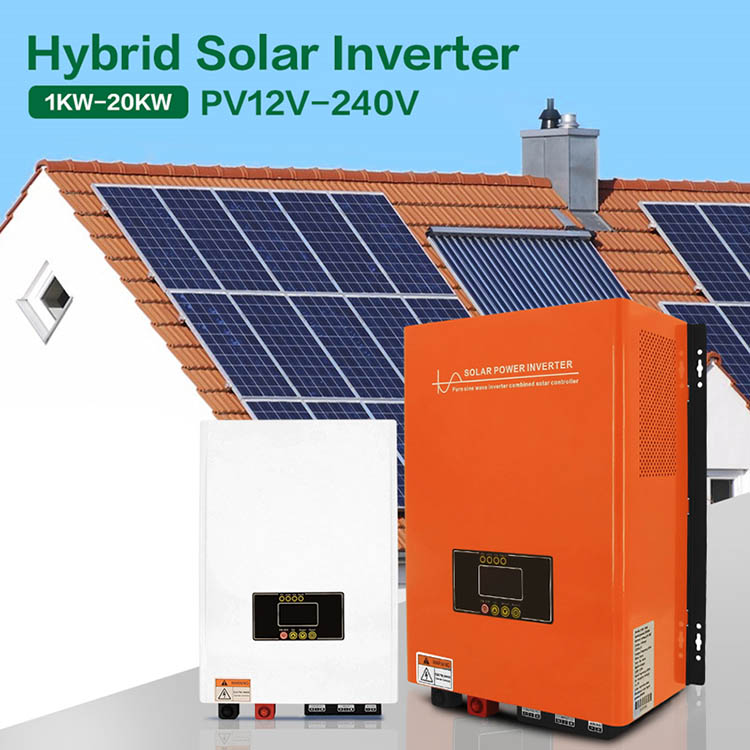Application of inverter load ratio
 Jun 27,2022
Jun 27,2022

 Rekesun
Rekesun
As one of the important technical indicators to measure the working state of the inverter, the inverter load ratio has not received due attention in the operation practice for a long time, and the application of this indicator is also lacking in the existing background monitoring and analysis software. Guangzhou rekesun Technology CO.LTD has done a lot of tracking and in-depth analysis of the inverter load ratio, and gained some experience and experience.
At the photovoltaic power generation site, affected by the light intensity and the environment, photovoltaic power generation is always in a variable load state, and data analysis is more difficult than a stable load state. In order to simplify the analysis, the load rate can be divided into several intervals according to the analysis object, and the operating parameters in this interval can be regarded as a stable working condition, so as to control the analysis error of the inverter load ratio within an acceptable range.

For example, there is a significant difference in the inverter conversion efficiency during the low load rate period and the high load rate period. In a climate with sufficient light, the inverter conversion efficiency is improved by about 2-3% compared with cloudy days. Therefore, the evaluation of the inverter conversion efficiency A more efficient solution is to compare and analyze within the same load rate range.
For another example, according to the distribution of the inverter load ratio throughout the year, the power generation after the change of the inverter capacity ratio can be accurately calculated. The low load rate period can be used to increase the power generation space, and the high load rate period can be used to increase the power generation space. Small rules, simulate the incremental power generation and carry out economic analysis. This method can cover a series of uncertain factors such as insufficient irradiation, component attenuation, series-parallel loss, DC line loss, and component damage, replacement, occlusion and cleaning, reducing computational complexity and improving simulation accuracy. Since the solar altitude and azimuth change periodically in units of years, this scheme is substituted into the annual data set for calculation, and the obtained results are more credible.
According to the corresponding power generation in the load rate range, some operating parameters can be simulated more accurately, such as the "Photovoltaic Power Generation System Performance Specification" (NB/T10394-2020) to calculate the operating temperature of the components in the cycle that needs to be confirmed for PR. The temperature represents the data in the entire cycle. If the arithmetic average of all the values in the interval is simply performed, the influencing factors of the power generation duration will be increased, and the influencing factors of the power generation amount will be reduced, and the error is obviously larger. Therefore, a more reasonable method is to divide all the temperatures in the cycle according to the load rate interval, average the values in the interval, and then perform the weighted average calculation with the power generation in this interval as the weight. The proportion of the temperature value is more reasonable. To calculate the operating temperature of a photovoltaic power station module in late summer and early autumn, the arithmetic average calculation method shows that the daily average temperature of the module is 42.26°C, and the corresponding temperature is 47.61°C calculated by the weighted load rate, with a difference of 11.2%.
For real-time PR analysis, due to the fluctuation of load, various technical indicators also show different fluctuation characteristics. In addition to the inverter conversion efficiency mentioned above, series loss, parallel loss, line loss, shading and dust accumulation have an impact on power generation. The impact rate of losses will change and should be treated with caution.
The inverter load ratio index also plays an important role in the refined management of photovoltaic power plants. Typical inverter load ratio power generation and power generation time ratio are shown in Figure 1(a) and Figure 1(b). Although the power generation time is long, the contribution of power generation is very small. Therefore, from the perspective of station operation and maintenance, if daily operation and maintenance work is carried out in different regions during the low load rate period, it will have little impact on the overall power generation of the power station. The necessary maintenance, cleaning, elimination of shortages, and experimental work can be selected in the reverse direction. The inverter is not disconnected from the grid and the low load rate period is carried out, which can not only reduce the electricity consumption for lighting at night, but also help to ensure the safety of equipment and personal safety.



 Home
Home Application of Solar Pumping System
Application of Solar Pumping System 







 syplighting.en.alibaba.com
syplighting.en.alibaba.com



